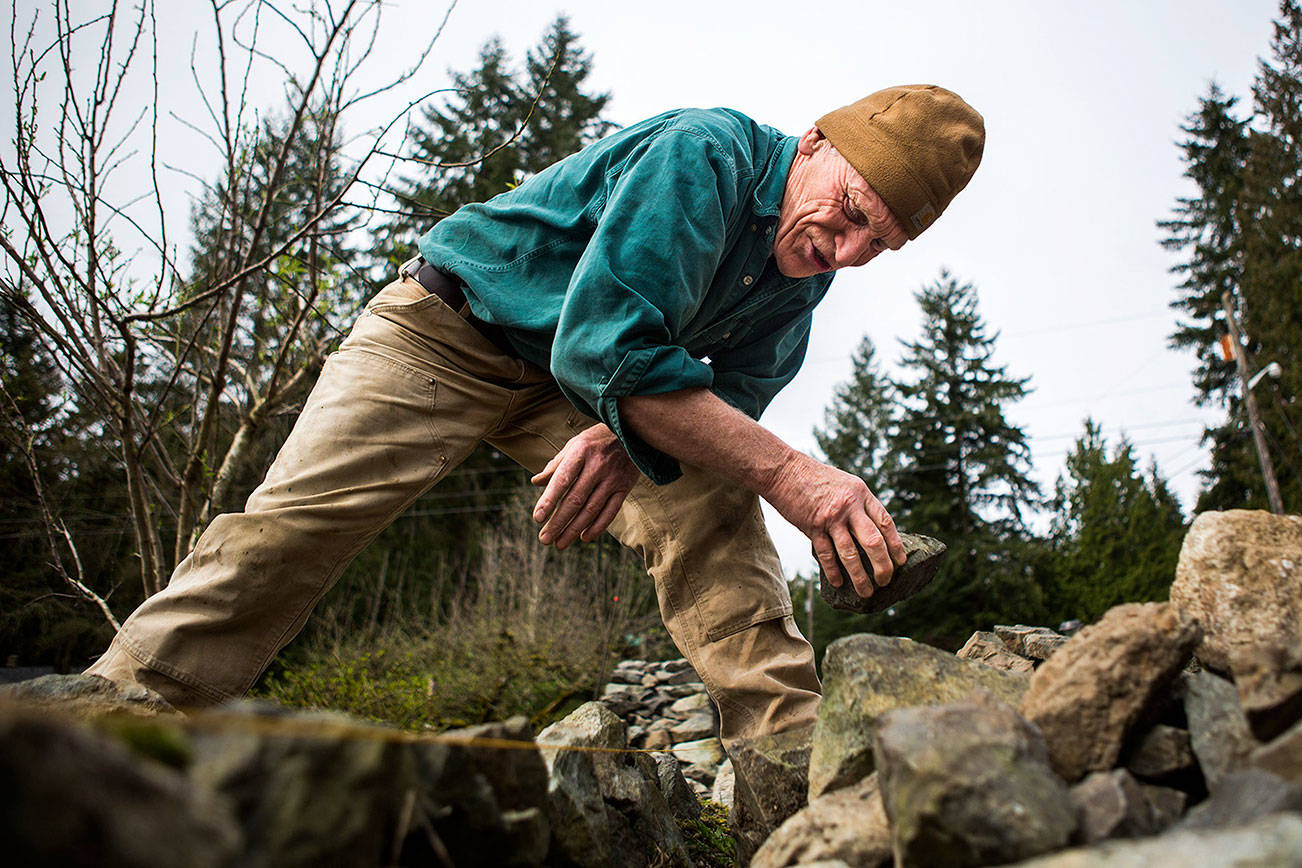Scottish rock star returns to repair stone wall built in 2001
BOTHELL – It’s more than just a stone wall 220 feet long.
It’s 75 tons of romance and charm.
The wall runs along a narrow rural road that ends where horses roam and cars return.
In 2001, two Scottish artisans traveled 4,500 miles to Washington to build the rock face of the former owners of the Strume Road House.
This led to a big run in The Herald at the time. After all, most people in Snohomish County don’t hire Scots to build rock walls by hand.
No wood. No mortar.
Just stones. And unwavering Scottish know-how.
The rock face was not the main draw for house hunters Tim Robinson and his wife, Julie Ross-Robinson, who last summer bought their dream home on half an acre with a pond for its dragonflies and a dependence on its drums.
“I thought it was cool,†Ross-Robinson said of the wall. “We had no idea it was so special.”
Another bonus was the stone figurine, which the couple dress in a red Scottish outfit, except during Seahawks season.
The wall was in poor condition from car damage over the years. And – wouldn’t you know – in a kitchen drawer in a manila envelope was the 2001 Herald clipping of the builders from Scotland.
The couple Googled the names of the artisans. To their surprise, Nick Aitken was close.
“He said, ‘I’m in Seattle, I just married my girlfriend who I met while working on the wall,†â€Ross-Robinson said.
Nick met Nicky in 2001 while working on the wall. She was going to the horse farm.
“She stopped and said, ‘What are you doing?'” Aitken said.
The question turned into a long conversation.
The courtship that followed lasted “17 years, round trip,” he said.
For years, they made it a world holiday. “Prague. China. Prague. Prague. Scotland. East Coast. Western coast.”
He and Nicky got married in 2017.
It has taken several visits over the past few months to Aitken to repair the Strume Road wall to its standards. The last touches to bring it up to date were applied last week.
The repair involved demolishing segments and rebuilding.
“I go all the way, to the worms,” ​​Aitken said. “Worms are a sign of the times. They don’t like the cold and they don’t like the dry; the things you notice. Your whole head is rewired in thinking stone.
The dry stone structure is a construction method characterized by the presence of a load-bearing facade of carefully selected interlocking stones.
“It has been in use for thousands of years,†Aitken said.
“It’s a common way of making field walls. They are everywhere there. It is part of sheep farming. I grew up on a sheep farm in the Highlands of Scotland. I have been exposed to stone walls all my life.
The former owners of the Strume Road house were on a trip to Scotland when they saw Aitken’s demonstration of what Scots call ‘dry dyke’ at a gaming event. They recruited Aitken and his fellow master craftsman Neil Rippingale to build the wall.
As a rule, Aitken works alone in the labor intensive trade.
“We tend to be purposeful, opinionated people who go it this way because we’re the only ones on the site,†he said.
According to the story, the rock was trucked from a quarry to Granite Falls. Aitken and Rippingale arrived in Seattle on February 15, 2001, with about 6 inches of snow. It didn’t stop them. The 6.8 Nisqually earthquake also did no damage as they were nearly complete two weeks later.
Over the years, the main threat to the wall is that people are backing up cars on it. Looks like the stone walls are objects in the mirror that are closer than they appear.
The 3-foot-high wall is approximately 28 inches wide at the bottom and 14-16 inches at the top.
“The wall is cut off, which is part of its strength, and if done right, that is part of its charm,†Aitken said. “It is a question of placing the stone well so that they bind together. It’s all about friction and balance.
The tools of the trades are a brick hammer with a metal handle, a shovel and a string.
“And a lot of persistence,†Aitken said.
“It’s better for your core than any yoga.”
Other parts of the body also benefit.
“It’s like women doing embroidery; they have that thumb bent. Your hands change to adapt to work.
It is convenient for picking up pebbles.
Aitken recently returned from Dry Stone Conservancy, a nonprofit organization in Lexington, Kentucky, dedicated to the preservation and promotion of ancient crafts. Rippingale runs workshops there.
Aitken writes a book on the stone walls.
Anyone who wants a wall will have to pitch.
“I am retired,†Aitken said, “but ready to take whatever is interesting.â€
Andrea Brown: [email protected]; 425-339-3443. Twitter @reporterbrown.
Gallery


